A CNC water jet cutter is a sophisticated machine that utilizes a high-pressure stream of water mixed with abrasive particles to cut through materials. The term “CNC” refers to Computer Numerical Control, which means that the machine’s cutting path is controlled by a computer program. The water jet cutter is equipped with a cutting head that directs the water jet onto the material, eroding it with extreme precision.
CNC Water Jet Cutter
Water cutting cutting without thermal deformation, to avoid the physical and chemical changes of materials, widely adapted to the cutting and processing of various materials, has the reputation of “universal cutting machine”, the incision is smooth and flat without burr, generally no need to reprocessing, the equipment is controlled by numerical control system, high cutting precision, cutting joint less than 1.2mm, easy to cut, save materials, The process does not produce environmentally polluting waste;

The IGOLDEN Water Jet Cutting Systems represents the greatest value for money available. This water jet machine can cut almost any material to 8″ (200 mm) thick at maximum cutting speeds with minimum Capital Outlay.
We build the water jet cutting machine to offer the solution that will provide every customer with a Water jet machine that lasts longer and requires less maintenance while delivering an easy to use, fast and accurate system at a very competitive price.
3D AC 5 axis cutting head
- The cutting resultis much better. When cuttingshaped sharp corners or continuous sharp corners, there is no obvious zero point at the corners;
- Wide range of processes. It can makecylindrical parquet, large angle chamfer and other drawing which AB five-axis waterjet can not be completed;
- High processing efficiency. The C axis rotates infinitely, and the corner speed is fast,which improves the processing efficiency.
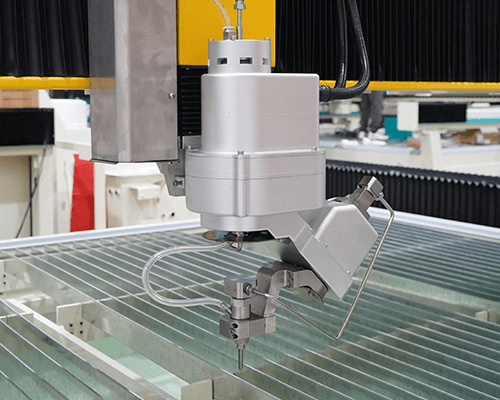
Adopt industrial PC + WEIHONG system
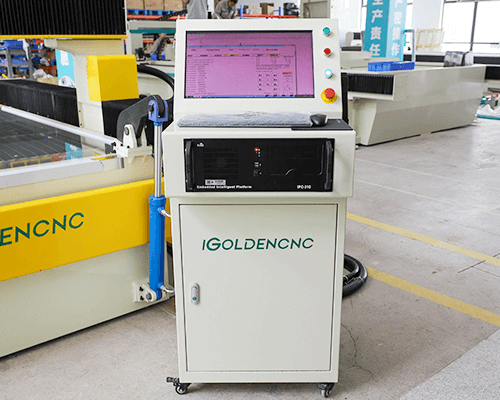
Dedicated water jet cutting software with graphic simulation running function, graphic input automatic programming function.
- Support for DXF files.
- Support forward and reverse processing functions.
- Uniform speed control function.
- Two modes of segmentation and smooth machining.
- Automatic processing with small arc speed.
- Coordinate recovery function after power off.
- Double lift speed parameter function.
- With cycle processing.
- Convenient pause to continue and start machining in any segment.
- Free time delay setting.
Abrasive feeder
Provide sand storage function for water knife, and automatically transport sand to the sand bucket.
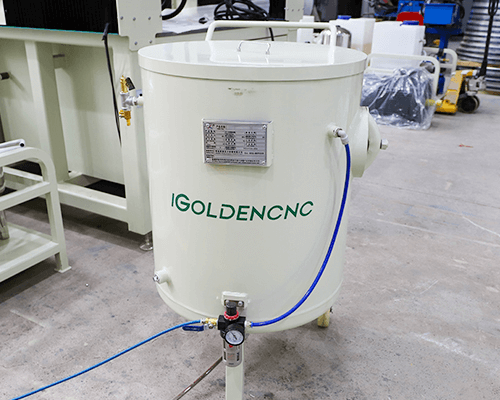
It can improve the automation degree of equipment and reduce the labor intensity of operators. The high precision sensor alerts the operator when sand is needed and can be used for 8-10 hours. No electronic control, simple operation, reliable, maintenance-free.
HP servo direct drive pump
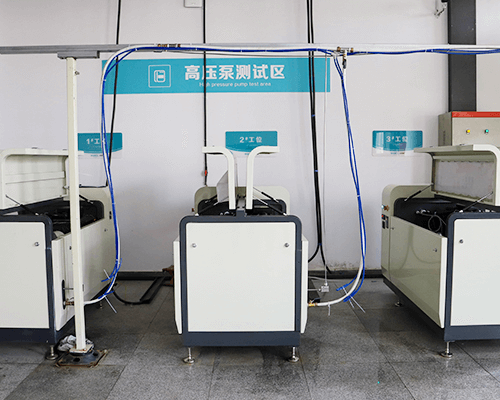
- Energy saving
- Environmental protection: servo direct drive, no hydraulic system, with self-cooling function.
- High efficiency
- Low noise: Almost no noise while working.
- Small weight: The total weight of direct drive pump is less than 600kg, and the movement is flexible.
- Beautiful appearance: reasonable structure design, beautiful appearance, because the direct drive pump has no hydraulic system, so as to avoid the leakage of hydraulic oil (hydraulic seal will be damaged for a long time, resulting in hydraulic oil leakage), eliminate the pollution of oil stains to equipment.
3 Axis / 4Aixs / 5 Axis Water Jet Cutting Machine
3 Axis cutting head could cut vertically.
4 Axis could cut at angle of ± 8 °
5 axis make cutting at ± 45 ° . 5 axis cutting head enables operators to cut bevels and mitre cuts up to 45 degrees. provides the option to activate a “taper compensation” setting which offsets the taper in the water stream to accurately achieve the desired angle.
Mainly for the marble, ceramic, stone, glass materials for industry of architecture, interior decoration, mold, art, automotive, aerospace, marine etc.
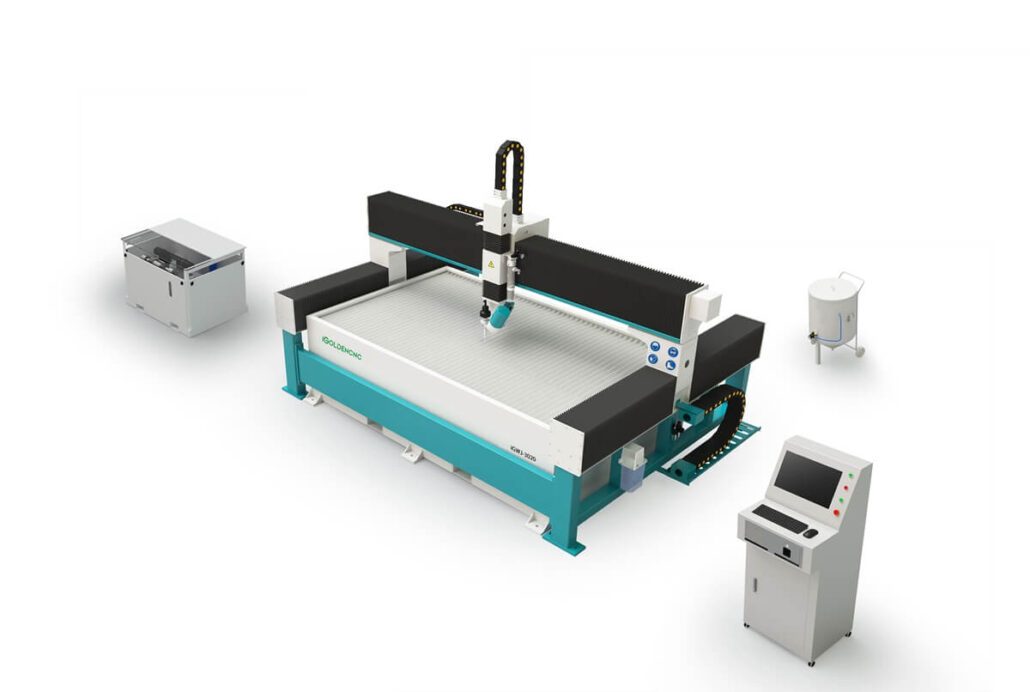
Water Jet Metal Cutting Machine
Water jet metal cutting machines are a versatile and powerful tool that can be used to cut a wide variety of metals with high accuracy and precision.
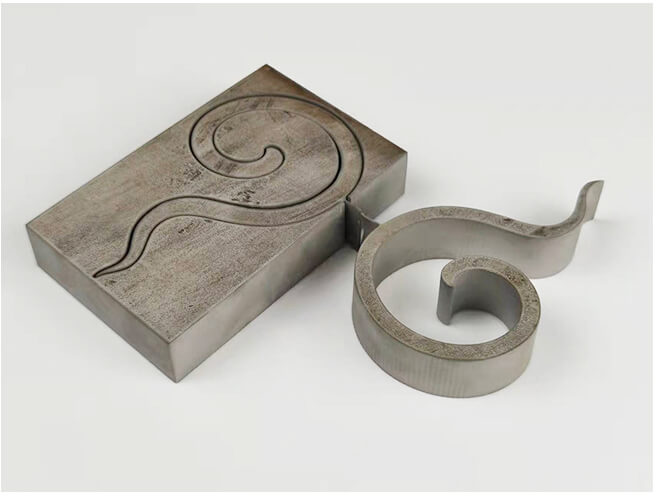
These machines use a high-pressure stream of water combined with an abrasive substance to cut through a varitey of metal, including steel, stainless steel, aluminum, and titanium.
The abrasive substance helps to increase the metal cutting power of the water jet, allowing it to cut through even the hardest metals.
Water jet metal cutting machines are used for a variety of applications, including manufacturing, prototyping, and repair. If you are looking for more metal fabrication solution, like plasma cutting, laser cutting, get to omni, we help you to find one stop metal cutting machines.
Water Jet Stone Cutting Machine
Water jet stone cutting machines are a powerful tool that can cut stone with precision and speed. They use a high-pressure stream of water combined with an abrasive to cut through stone, even the hardest and thickest varieties.
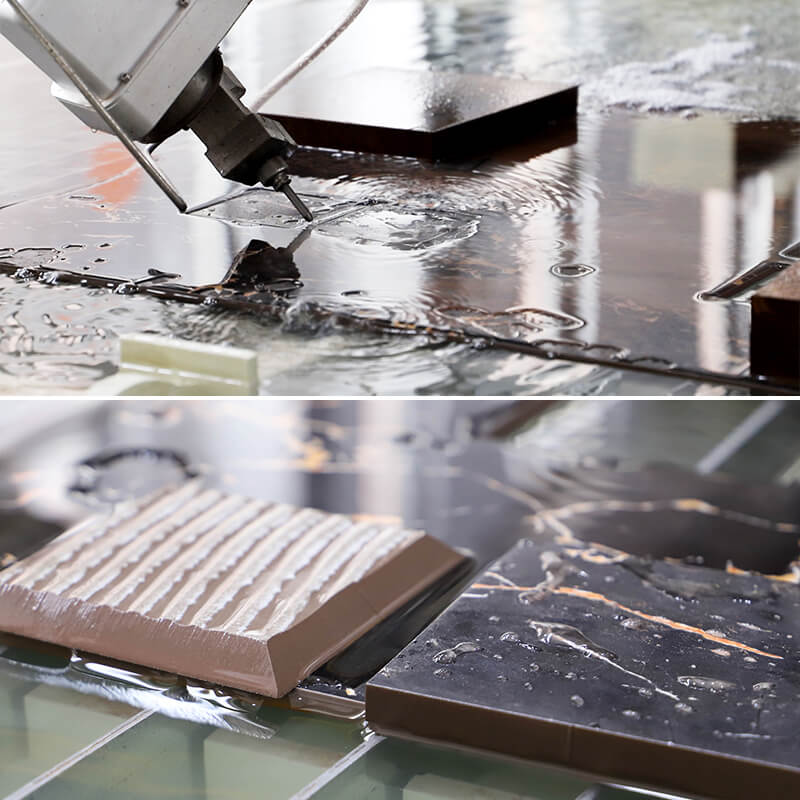
Water jet stone cutting machines are used in a variety of applications, including manufacturing, prototyping, and restoration. They are a non-destructive process that produces clean cuts, making them ideal for applications where the stone needs to be preserved.
Unlike other methods of stone cutting, such as sawing or laser cutting, water jet stone cutting does not produce any heat or sparks. This makes it a non-destructive process that is ideal for applications where the stone needs to be preserved, such as in restoration work. Water jet stone cutting machines also produce clean cuts that do not require post-processing, which saves time and money.
One of the most common applications of water jet stone cutting machines is in the manufacturing of stone products. Water jet stone cutting machines can be used to cut stone into a variety of shapes and sizes, making them ideal for the production of countertops, tiles, and gravestones. Water jet stone cutting machines can also be used to create prototypes of stone products, which can be used to test the design and functionality of the product before it is mass-produced.
Another popular application of water jet stone cutting machines is in the art world. Water jet stone cutting machines can be used to create intricate and precise stone sculptures, as well as stone art pieces that incorporate other materials, such as metal or wood. Water jet stone cutting machines can also be used to create stone mosaics, which are made up of small pieces of stone that are cut to different shapes and sizes.
What Stone Can Be Cut with Water Jet Cutting Machine
- Granite: Granite is a hard and durable stone that is often used for countertops, tiles, and gravestones. Water jet cutting machines can cut granite with high precision and accuracy.
- Marble: Marble is a softer stone than granite, but it is still strong and versatile. Water jet cutting machines can cut marble with ease.
- Limestone: Limestone is a sedimentary rock that is often used for building materials. Water jet cutting machines can cut limestone with precision and accuracy.
- Sandstone: Sandstone is a sedimentary rock that is often used for decorative purposes. Water jet cutting machines can cut sandstone with ease.
- Travertine: Travertine is a limestone that is often used for flooring and countertops. Water jet cutting machines can cut travertine with precision and accuracy.
- Quartz: Quartz is a hard and durable stone that is often used for countertops and jewelry.
- Soapstone: Soapstone is a soft stone that is often used for carving and sculptures.
- Onyx: Onyx is a semi-precious stone that is often used for jewelry and decorative purposes.
- Mica: Mica is a mineral that is often used for electrical insulation and electronics.
Water Jet Glass Cutting Machine
Water jet glass cutting machines are a versatile and powerful tool that can be used to create intricate and precise glass cuts with ease. These machines use a high-pressure stream of water combined with an abrasive substance to cut through glass. The abrasive substance helps to increase the cutting power of the water jet, allowing it to cut through even the thickest and hardest glasses. Water jet glass cutting machines are used for a variety of applications, including manufacturing, prototyping, and art.
One of the most common applications of water jet glass cutting machines is in the manufacturing of glass products. Water jet glass cutting machines can be used to cut glass into a variety of shapes and sizes, making them ideal for the production of windows, doors, table tops, and other glass products. Water jet glass cutting machines can also be used to create prototypes of glass products, which can be used to test the design and functionality of the product before it is mass-produced.
Another popular application of water jet glass cutting machines is in the art world. Water jet glass cutting machines can be used to create intricate and precise glass sculptures. Also, they can cut glass art pieces that incorporate other materials, such as metal or wood.
Water jet glass cutting machines can also be used to create glass mosaics, which are made up of small pieces of glass that are cut to different shapes and sizes.
How a Water Jet Cutting Machine Works
A water jet cutting machine uses a high-pressure jet of water to cut through a variety of materials. The water jet is typically combined with an abrasive substance, such as garnet, to increase the cutting power.
Here are the main steps on how a water jet cutting machine works:
- The water jet is created by a pump that pressurizes the water to thousands of pounds per square inch (psi).
- The abrasive substance is mixed with the water jet in a nozzle.
- The water jet and abrasive substance are then directed at the material to be cut.
- The water jet and abrasive substance erode the material, causing it to cut.
- The cutting head is typically controlled by a CNC system, which allows for precise cutting.
The water jet is typically created by a high-pressure pump. The pump can be either a piston pump or a turbine pump. Piston pumps are typically used for smaller water jet cutting machines, while turbine pumps are typically used for larger water jet cutting machines.
The abrasive substance is typically garnet, which is a type of sand. Garnet is used because it is very hard and abrasive. Other abrasive substances that can be used include aluminum oxide, silicon carbide, and zirconium oxide.
The water jet and abrasive substance are directed at the material to be cut through a nozzle. The nozzle is typically made of a very hard material, such as tungsten carbide. The nozzle is also very small, typically only a few millimeters in diameter.
CNC system control the water jet cutting head. The CNC system allows for precise cutting by controlling the movement of the cutting head. The CNC system can also be used to create complex cutting patterns.
Water Jet Cutting Machine Price
The cost of a water jet cutting machine can vary depending on a number of factors, including the size of the machine, the type of cutting head, and the capabilities of the machine. However, in general, water jet cutting machines can range in price from a few thousand dollars to several hundred thousand dollars.
Here are some of the factors that can affect the cost of a water jet cutting machine:
- Size: The size of the machine will affect the cost, as larger machines are more expensive than smaller machines.
- Type of cutting head: The type of cutting head will also affect the cost, as more advanced cutting heads are more expensive than less advanced cutting heads.
- Capabilities: The capabilities of the machine will also affect the cost, as machines with more features are more expensive than machines with fewer features.
Overall, the cost of a water jet cutting machine can vary depending on a number of factors. However, water jet cutting machines can be a valuable tool for a variety of applications, and the cost of the machine can be justified in many cases.
If you are considering purchasing a water jet cutting machine from China, it is important to weigh the cost of the machine against the cost of water jet cutting for your specific applications.
Here are some of the factors that can affect the cost of water jet cutting:
- The type of material being cut: The cost of water jet cutting will vary depending on the type of material being cut. For example, cutting metal is more expensive than cutting plastic.
- The size and complexity of the cut: The cost of water jet cutting will also vary depending on the size and complexity of the cut. For example, cutting a small, simple cut is less expensive than cutting a large, complex cut.
- The number of cuts being made: The cost of water jet cutting will also vary depending on the number of cuts being made. For example, cutting a single cut is less expensive than cutting multiple cuts.
Benefits of CNC Water Jet Cutters
1. Precision Cutting
CNC water jet cutters are renowned for their exceptional precision. The focused water jet, guided by computer-controlled movements, can achieve intricate cuts with tolerances as small as 0.1 millimeters. This level of precision makes water jet cutters ideal for industries that require intricate designs and tight tolerances, such as aerospace, automotive, and architectural applications.
2. Versatility in Material Handling
One of the key advantages of CNC water jet cutters is their ability to cut through a wide range of materials. From metals like steel and aluminum to stone, glass, ceramics, composites, and even rubber or foam, water jet cutters can handle diverse materials with ease. This versatility makes them invaluable in industries such as manufacturing, fabrication, and artistry.
3. No Heat-Affected Zone
Unlike other cutting methods that generate heat, such as laser or plasma cutting, water jet cutting is a cold process. The absence of heat during the cutting process eliminates the risk of heat-induced distortion, warping, or material damage. This makes water jet cutters ideal for materials that are sensitive to heat, such as plastics, composites, and heat-treated metals.
4. Minimal Material Waste
CNC water jet cutters are known for their efficiency in material utilization. The narrow kerf width of the water jet, combined with the ability to nest multiple parts within a single sheet of material, minimizes material waste. This not only reduces costs but also promotes sustainable practices by optimizing material usage.
5. Environmentally Friendly
Water jet cutting is an environmentally friendly cutting method. The process does not generate hazardous fumes, gases, or dust, making it safe for operators and the environment. Additionally, the water used in the cutting process can be recycled and reused, reducing water consumption and minimizing the machine’s environmental impact.
Applications of CNC Water Jet Cutters
CNC water jet cutters find applications in a wide range of industries. Here are some notable examples:
1. Aerospace and Automotive
In the aerospace and automotive industries, CNC water jet cutters are used to fabricate intricate components with high precision. From engine parts to interior panels, water jet cutting ensures accuracy and consistency in the production of critical components. The ability to cut through various materials, including metals and composites, makes water jet cutters indispensable in these industries.
2. Architecture and Interior Design
CNC water jet cutters play a vital role in architectural and interior design applications. They can cut materials like stone, glass, and metal to create intricate patterns, decorative elements, and custom designs. Water jet cutting allows architects and designers to bring their visions to life, adding unique and visually appealing features to buildings, facades, and interiorspaces.
3. Manufacturing and Fabrication
In the manufacturing and fabrication industries, CNC water jet cutters are used for a wide range of applications. They can cut through metals, plastics, and composites, making them ideal for producing parts, prototypes, and custom components. Water jet cutting offers flexibility and precision, allowing manufacturers to meet strict quality standards and deliver products of exceptional quality.
4. Art and Sculpture
Artists and sculptors have embraced CNC water jet cutters as a valuable tool for their creative endeavors. The ability to cut through various materials with precision opens up new possibilities for artistic expression. Water jet cutting allows artists to create intricate designs, sculptures, and installations that would be challenging or impossible to achieve with traditional methods.
5. Electronics and PCB Manufacturing
In the electronics industry, CNC water jet cutters are used for precision cutting of printed circuit boards (PCBs). Water jet cutting ensures clean and accurate cuts, enabling the production of intricate PCB designs. The non-thermal nature of water jet cutting also eliminates the risk of heat damage to sensitive electronic components, making it an ideal choice for PCB manufacturing.
CNC waterjet machines have revolutionized the stone countertop fabrication industry, offering unparalleled precision, versatility, and efficiency. These machines use a high-pressure stream of water mixed with abrasive materials to cut through stone, allowing for intricate designs and smooth finishes. This comprehensive guide explores the benefits, applications, and considerations of using CNC waterjet technology for stone countertop fabrication.
CNC Waterjet Machine
A CNC (Computer Numerical Control) waterjet machine is a cutting tool that uses a high-pressure jet of water mixed with abrasive particles to cut through various materials, including stone. The CNC component allows for precise control of the cutting process, enabling the creation of intricate designs and shapes.
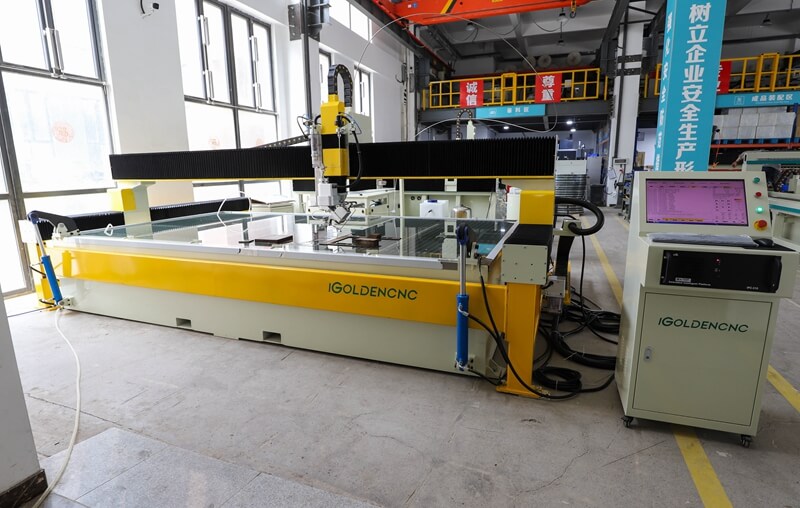

How Does a CNC Waterjet Machine Work?
The process of cutting stone with a CNC waterjet machine involves several key steps:
- Design Creation: Using CAD (Computer-Aided Design) software, create or import the design for the stone countertop.
- Toolpath Generation: Convert the design into a toolpath using CAM (Computer-Aided Manufacturing) software.
- Machine Setup: Secure the stone slab on the machine’s bed and select the appropriate cutting parameters.
- Cutting: Load the toolpath into the CNC machine and start the cutting process. The high-pressure waterjet mixed with abrasive particles cuts through the stone according to the programmed design.
- Finishing: Inspect the cut piece and perform any necessary finishing touches, such as polishing or sealing.

Benefits of Using CNC Waterjet Machines for Stone Countertop Fabrication
Precision and Accuracy
CNC waterjet machines offer exceptional precision and accuracy, allowing for the creation of intricate designs and complex shapes. The computer-controlled movements ensure consistent and high-quality cuts.
Versatility
Waterjet machines can cut through various types of stone, including granite, marble, quartz, and slate. This versatility makes them ideal for a wide range of countertop fabrication projects.
Smooth Edges
The waterjet cutting process produces smooth edges with minimal chipping, reducing the need for extensive finishing work. This results in a cleaner and more polished final product.
Material Efficiency
Waterjet cutting minimizes material waste by producing narrow kerf widths and precise cuts. This efficiency is particularly beneficial when working with expensive stone materials.
Environmentally Friendly
Waterjet cutting is an environmentally friendly process, as it does not produce harmful fumes or dust. The water used in the cutting process can be recycled, reducing water consumption.
Applications of CNC Waterjet Machines in Stone Countertop Fabrication
CNC waterjet machines are used in various applications within the stone countertop fabrication industry, including:
- Custom Countertops: Creating custom countertops with intricate designs, shapes, and inlays.
- Edge Profiles: Cutting precise edge profiles for a polished and professional finish.
- Sink Cutouts: Making accurate sink cutouts and faucet holes.
- Backsplashes: Fabricating matching backsplashes with detailed patterns.
- Tile and Mosaic Work: Producing detailed tile and mosaic pieces for decorative purposes.

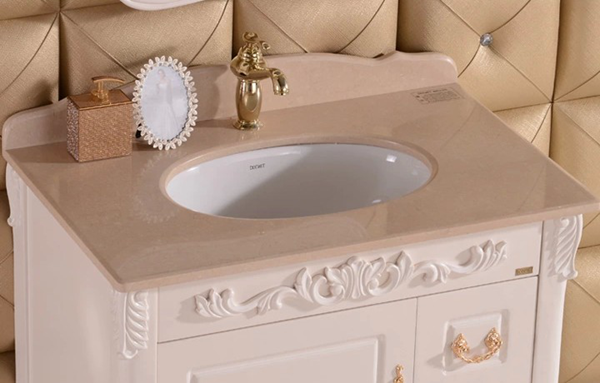
Choosing the Right CNC Waterjet Machine for Stone Countertop Fabrication
Consider Your Needs
Identify the specific requirements for your countertop fabrication projects, such as the types of stone you will be working with, the complexity of the designs, and the production volume. Choose a machine that meets these needs.
Machine Size and Capacity
Consider the size of the stone slabs you will be cutting and choose a machine with an appropriate bed size and cutting capacity. Larger machines can handle bigger projects, while smaller machines are suitable for detailed work.
Pump Pressure
The pump pressure determines the cutting power of the waterjet. Higher pressure pumps can cut through thicker and harder materials more efficiently. Choose a pump pressure that matches your specific cutting requirements.
Software Compatibility
Ensure the CNC machine is compatible with the CAD and CAM software you plan to use. Compatibility ensures seamless design and toolpath generation.
Budget
Determine your budget and choose a machine that offers the best value for your investment. Consider both the initial cost and long-term benefits, such as durability and low maintenance.

